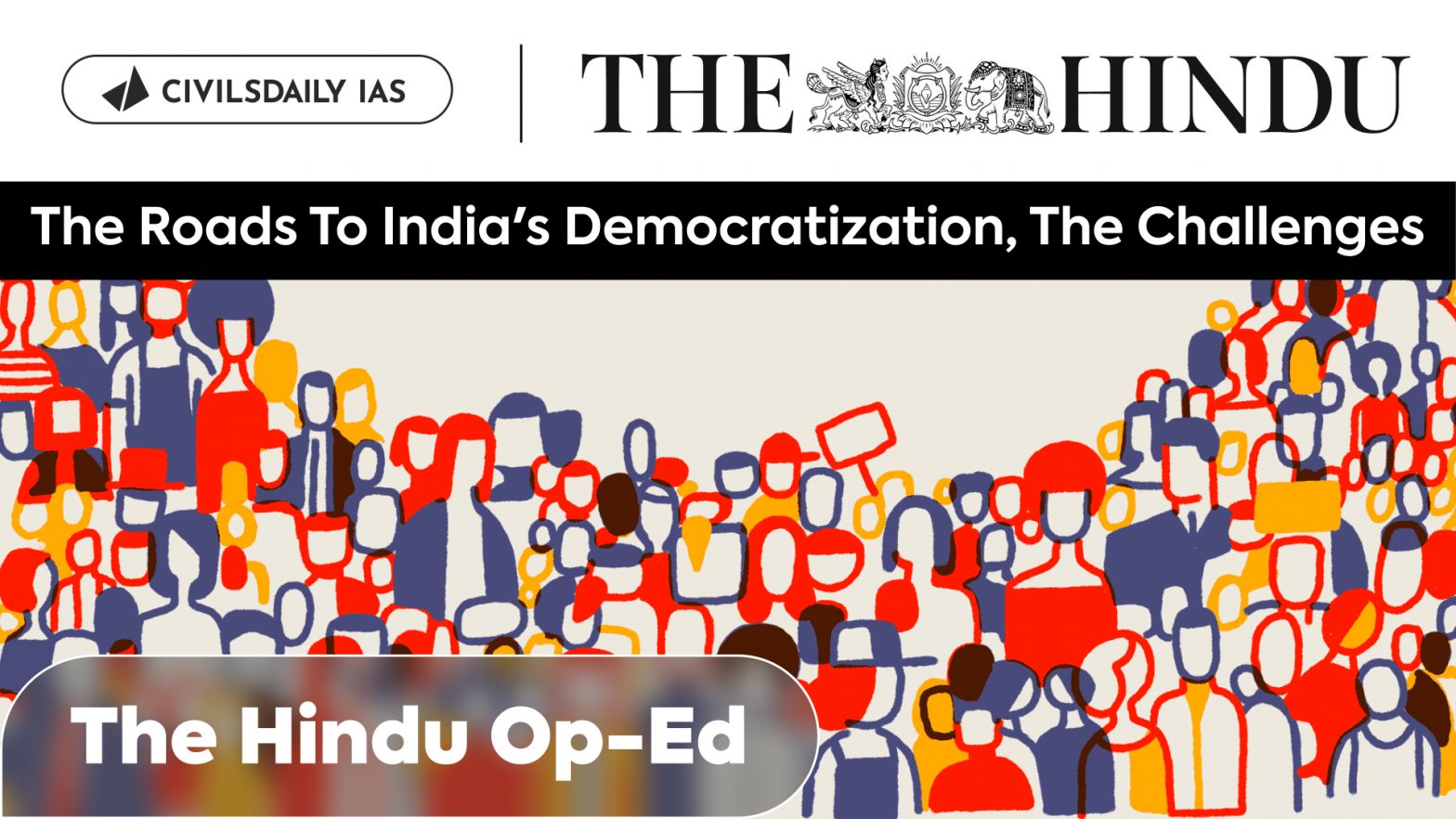| PYQ Relevance: Q To what extent, in your opinion, has the decentralisation of power in India changed the governance landscape at the grassroots? (UPSC IAS/2022) Q How far do you think cooperation, competition and confrontation have shaped the nature of federation in India? Cite some recent examples to validate your answer.(UPSC IAS/2020) |
Mentor’s comment: The 18th Indian general election signals a potential end to a cycle despite no change in power. The Bharatiya Janata Party’s loss of majority could catalyze a re-democratization process. Over a decade, India witnessed political and economic power concentrating, sidelining institutions and exacerbating inequalities. A shift in power dynamics and narratives may lead to significant changes, but their realization remains uncertain.
Let’s learn
Why in the news?
The election’s conclusion may signal a transition, yet the revival of India’s democracy rests on the involvement of pivotal actors, such as civil society.
10 Years of Modi Government: A Critical Analysis
- Concentration of Power: For 10 years, India has experienced de-democratisation, with political and economic power concentrated in a few hands.
- Bypassing Institutions: Top state officials made decisions, bypassing Parliament and federalism.
- Economic Dominance: A few business cronies accessed resources and dominated the economy.
- Increasing Inequalities: Inequalities increased, but the poor supported a pro-rich government due to identity politics and communal polarisation, overshadowing social issues.
Expected Changes
- Power Dynamics: Significant changes are anticipated in power dynamics and narratives due to the new balance of power.
- Partial Realization: However, these changes might not fully materialize.
No Shift, But a Tilt
- Dominant Party: The BJP remains the dominant party, though Narendra Modi must now engage in coalition politics.
- Institutional Empowerment: The weakening of Modi’s authority may empower institutions, including the Election Commission of India, the judiciary, and the media, to resist the government’s use of restrictive laws.
- Revitalised Federalism: Federalism might be revitalised due to the need for support from state parties like the Telugu Desam Party (TDP) and Janata Dal (United) (JD(U)).
Narrative Shifts
- Counter to National-Populism: Mr. Modi’s national-populist claim of embodying the nation might be countered by an agenda prioritising social equality.
- Social Justice Focus: The Congress, Samajwadi Party, Rashtriya Janata Dal, and others are mobilising supporters on social issues, including the caste census, to promote social justice.
- Opposition’s Rise to Popularity: Rahul Gandhi’s Bharat Jodo Yatra and Bharat Jodo Nyay Yatra have made him a popular leader, defending the Constitution and building a coalition of parties under the INDIA bloc.
Different Scenarios within the NDA Alliance
- Bihar’s Caste Census: Nitish Kumar might push the National Democratic Alliance to emulate Bihar’s caste census initiative.
- Coalition Politics: The TDP, JD(U), and others may promote their agendas, leading to different scenarios:
- Modus Vivendi: A modus vivendi based on concessions from the Modi government to accommodate demands from TDP, JD(U), and others.
- Worst-Case Scenario: A worst-case scenario where TDP and JD(U) make demands affecting BJP’s power-sharing or support base, possibly shifting alliances and causing the government to fall.
Potential Crisis
- Scenario Development: The second scenario might unfold over months or years, especially if the Modi government weakens due to electoral setbacks.
- Opposition Unity: The Opposition might solidify its unity, mobilize in the streets, and recruit more partners. Mayawati might revive the Bahujan Samaj Party in the new political context.
Future of the Ruling Alliance
- Coalition Management: Modi may struggle to keep the NDA together if partners demand too much or if he fails to manage coalition tensions.
- Leadership Change: The Sangh Parivar might replace Modi with someone like Nitin Gadkari, supported by the Rashtriya Swayamsevak Sangh (RSS).
- Resistance to Power Loss: Modi and Amit Shah are unlikely to relinquish power easily, using various techniques to maintain their positions.
Role of Civil Society
- Crucial Role: Civil society will play a crucial role in rejuvenating India’s democracy.
- Beyond State-Level Change: A mere change of guard at the state level won’t suffice for re-democratisation or countering the dense network of RSS-related vigilantes.
Way Forward
- Strengthening Institutions: It’s crucial to bolster democratic institutions like the judiciary, Election Commission, and media to ensure checks and balances.
- Promoting Federalism: Federalism should be revitalized by empowering state governments and ensuring equitable distribution of resources.
- Inclusive Politics: Political parties must prioritize inclusive policies addressing social and economic inequalities, fostering unity beyond identity politics.
- Civil Society Engagement: Encourage active participation of civil society in monitoring government actions, advocating for transparency, and promoting accountability.
- Legal Reforms: Implement legal reforms to safeguard democratic processes and protect civil liberties, ensuring fair and transparent elections.
- Coalition Dynamics: Effective management of coalition dynamics is essential to maintain stability and address regional aspirations within a federal framework.
Conclusion
- India’s democratic resilience will be tested in the coming years as it navigates the challenges of coalition politics, institutional empowerment, and societal inclusiveness.
- The interplay between political centralisation and resistance will shape the future path of India’s democracy, emphasizing the need for continuous engagement, reform, and accountability.

